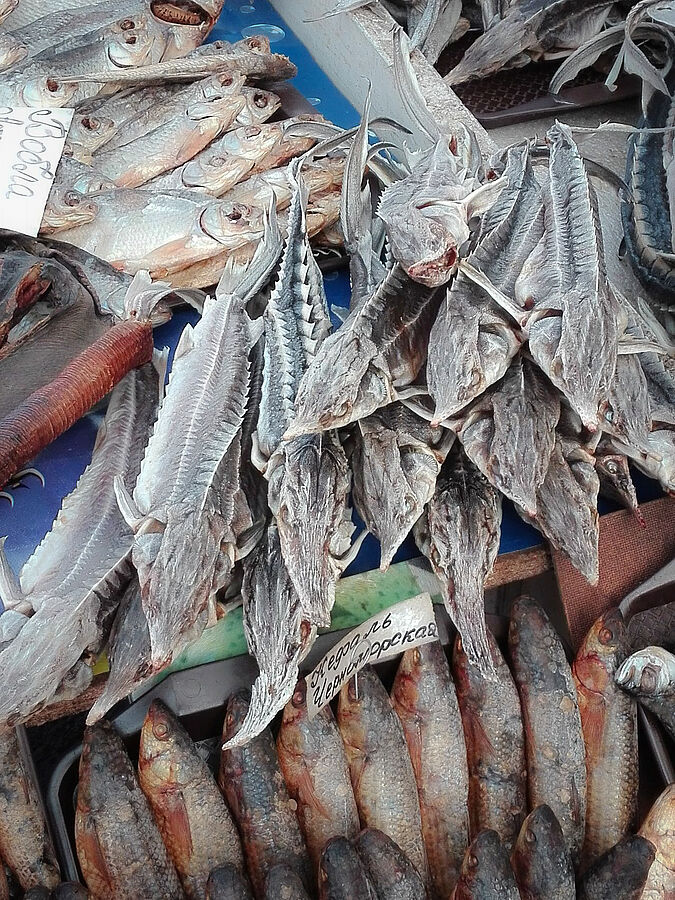Today, legal, internationally tradeable caviar can only come from farmed sturgeon, and there are strict regulations in place to help protect the species. However, by conducting genetic and isotope analyses on caviar samples from Bulgaria, Romania, Serbia, and Ukraine—nations bordering the remaining wild sturgeon populations—a team of sturgeon experts found evidence that these regulations are actively being broken. Their results, published today in the journal “Current Biology”, show that half of the commercial caviar products they sampled are illegal, and some don’t even contain any trace of sturgeon.
“The conservation status of the Danube sturgeon populations renders each individual important for their survival, and the observed intensity of poaching undermines any conservation effort”, write the researchers, led by Arne Ludwig of the Leibniz-Institute for Zoo & Wildlife Research. In Europe, there are four remaining sturgeon species, including Beluga, Russian, stellate and sterlet, that are capable of producing caviar. The last remaining wild populations of these species in the European Union can be found in the Danube River and the Black Sea. “Each species has been protected since 1998 under CITES, the Convention on International Trade in Endangered Species of Wild Fauna and Flora”, Ludwig says. “In 2000, their CITES listing was accompanied by a strict, international labelling system for all caviar products designed to stop illegal trade.” Despite these protections, it was widely known from local anecdotal accounts that illegal poaching is still happening, cites the team, even though no formal investigations had been conducted.
To find out the true source of the commercially sold caviar products being produced in native sturgeon regions, the researchers bought caviar both online and in person from a wide variety of sources including local markets, shops, restaurants, bars and aquaculture facilities. They also included five samples that had been seized by authorities. In total, they collected and analysed 149 samples of caviar and sturgeon meat. After analysing each sample’s DNA and isotope patterns, the team found that 21% of the samples came from wild-caught sturgeons and that these wild-caught fish were sold in all of the countries studied. They also found that 29% of the samples violated CITES regulations and trade laws, which included caviar that listed the wrong species of sturgeon or the wrong country of origin, and categorized another 32% of samples as “customer deception,” such as samples declared as wild products that actually originated from aquaculture. Three of the samples, served in Romania in a dish called “sturgeon soup,” weren’t sturgeon at all.
“Our results indicate an ongoing demand for wild sturgeon products, which is alarming, since these products endanger wild sturgeon populations”, says Jutta Jahrl, manager of the project „Life for Danube Sturgeons“ at WWF Austria. “The persistent demand fuels poaching and indicates that consumers do not fully accept aquaculture products as a substitute. In addition, caviar being sold in violation of CITES and EU obligations questions the effectiveness of controls in general and the labelling system in particular.”
The authors suggest that the large volume of illegal poaching activity could be an indicator that local seafood vendors are lacking adequate income opportunities, which might increase the pressure to engage in illegal fishing activity. They also point to the fact that there is likely a lack of effective law enforcement in these regions, either because stopping illegal poaching isn’t a priority for local authorities or because they don’t have the tools to prove a fish’s illegal origin.
But regardless of the reasons, they stress the importance of taking action, and quickly. “Although poaching and illegal wildlife trade are often considered a problem in developing countries, these findings bear evidence that a high proportion of poached sturgeon products originates from EU and accession candidate states,” write the authors. “The control of caviar and sturgeon trade in the EU and candidate member states urgently needs improvement to ensure that Danube sturgeon populations will have a future.”


